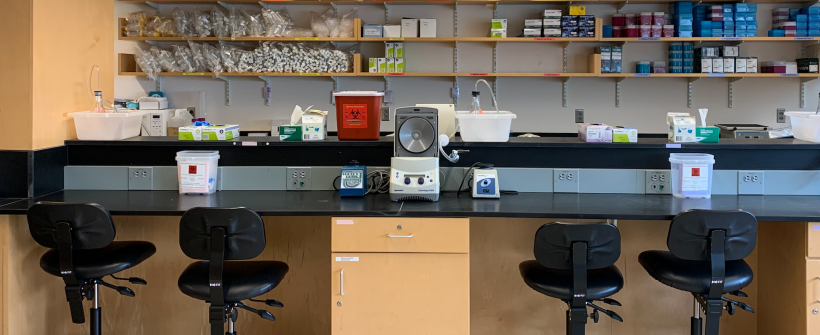Difference between revisions of "20.109(F20):Module 2"
Noreen Lyell (Talk | contribs) (Created page with "<div style="padding: 10px; width: 820px; border: 5px solid #0d368e;"> {{Template:20.109(F20)}} =<center>Module 2</center>= '''Lecturer:''' [http://be.mit.edu/directory/jac...") |
Noreen Lyell (Talk | contribs) (→References) |
||
| Line 40: | Line 40: | ||
==References== | ==References== | ||
| − | [[Media:Sp17 M1 reference NatProt.pdf| A method for the covalent capture and screening of diverse small molecules in a microarray format.]] ''Nature Protocols.'' 1:2344-2352. | + | [[Media:Sp17 M1 reference NatProt.pdf| A method for the covalent capture and screening of diverse small molecules in a microarray format.]] ''Nature Protocols.'' (2006) 1:2344-2352. |
| − | [[Media:Sp17 M1 reference ChemBiol.pdf| Recent discoveries and applications involving small-molecule microarrays.]] ''Chemical Biology.'' 18:21-28. | + | [[Media:Sp17 M1 reference ChemBiol.pdf| Recent discoveries and applications involving small-molecule microarrays.]] ''Chemical Biology.'' (2014) 18:21-28. |
==Notes for teaching faculty== | ==Notes for teaching faculty== | ||
[[20.109(F20):Prep notes for M2| Prep notes for M2]] | [[20.109(F20):Prep notes for M2| Prep notes for M2]] | ||
Revision as of 16:25, 16 July 2020
Contents
Module 2
Lecturer: Jacquin Niles
Instructors: Noreen Lyell, Leslie McClain and Becky Meyer
TAs:
Overview
The primary experiment in this module is a small-molecule microarray (SMM), which ... To complete the SMM screen, the protein of interest must be cloned into an expression vector and then purified.
Research goal: Identify ligands, or small molecules, that potentially bind to the protein of interest.
Lab links: day by day
M2D1: Complete in silico cloning of protein expression plasmid
M2D2: Perform protein purification protocol
M2D3: Assess purity and concentration of purified protein
M2D4: Prepare small molecule microarray (SMM) slides with purified protein
M2D5: Scan SMM slides to identify putative small molecule binders
M2D6: Analyze SMM data to confirm putative small molecule binders
M2D7: Examine putative small molecule binders for common features
Major assignments
| Journal club presentation
| Research article
References
A method for the covalent capture and screening of diverse small molecules in a microarray format. Nature Protocols. (2006) 1:2344-2352.
Recent discoveries and applications involving small-molecule microarrays. Chemical Biology. (2014) 18:21-28.
